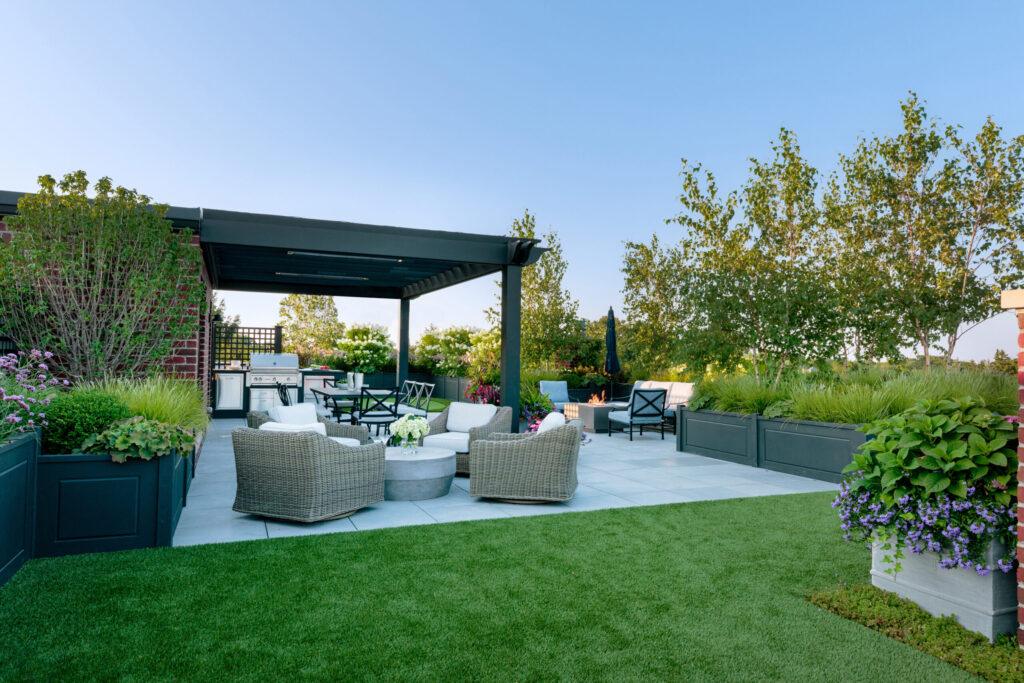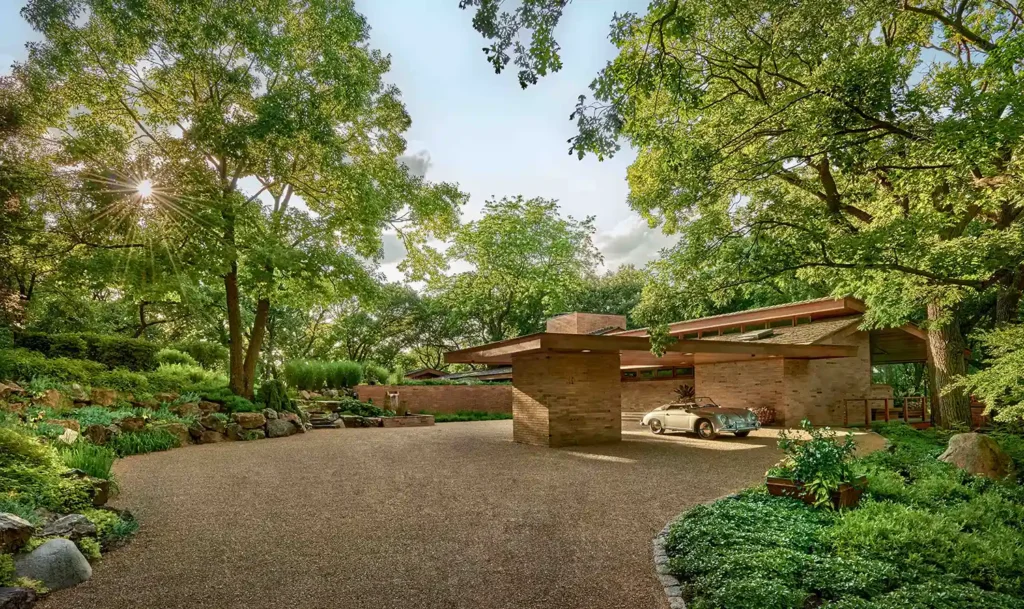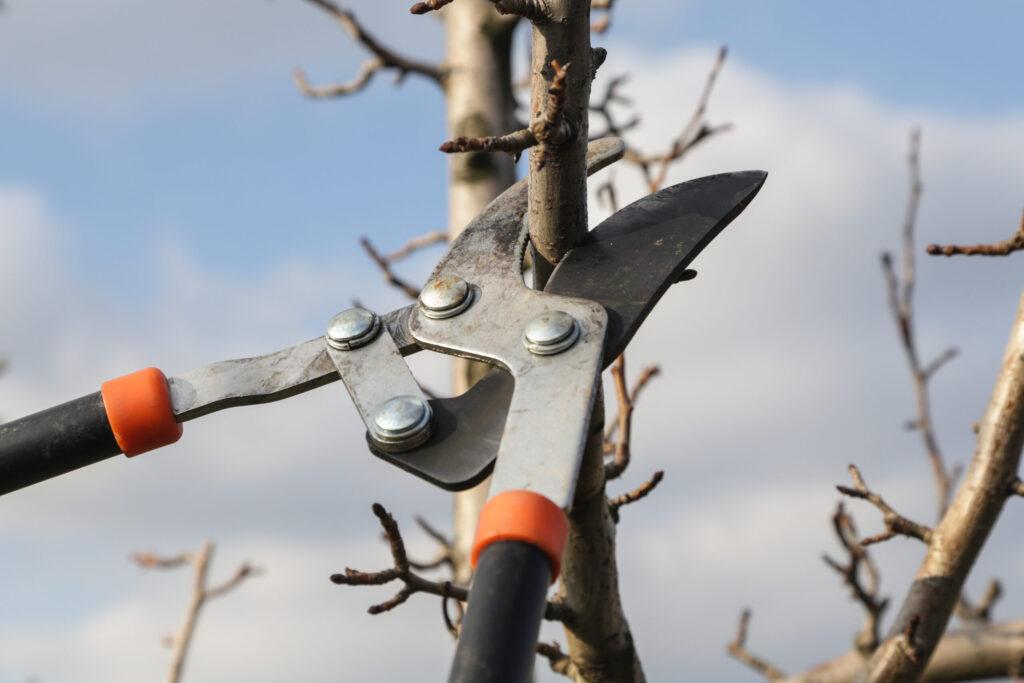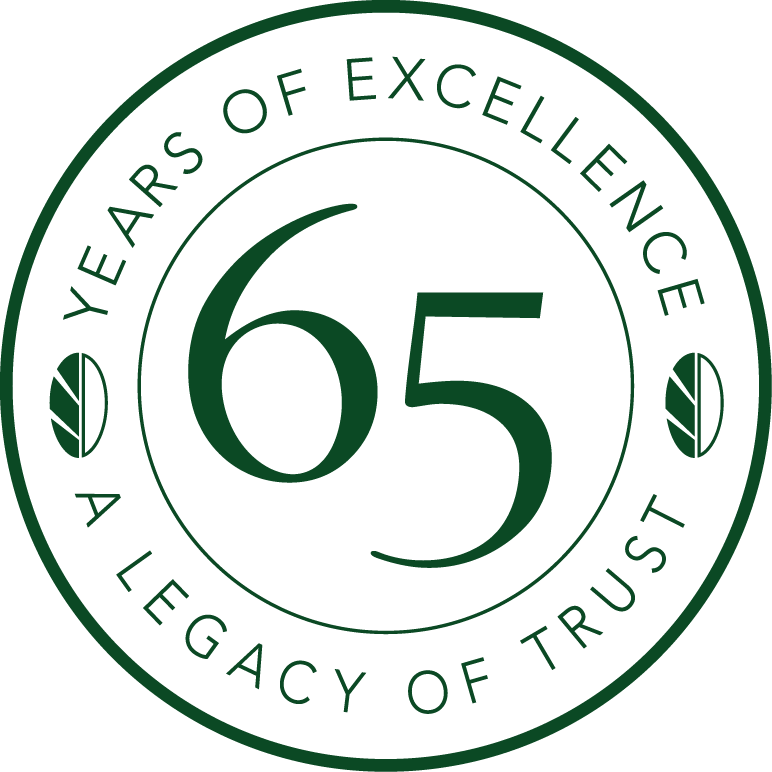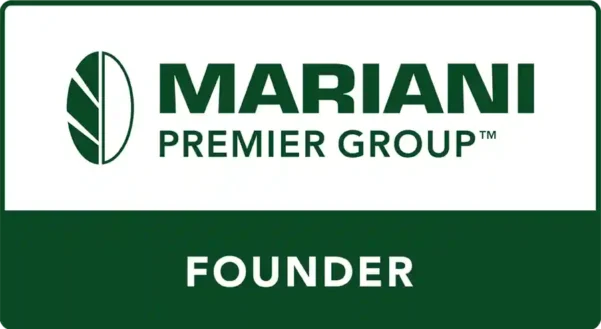If taking care of your property sometimes feels overwhelming, you are not alone. Landscape planning and maintenance can be daunting, especially if your goal is a healthy, beautiful outdoor space that reflects your personality and style. Whether starting from scratch or cultivating a thoughtfully designed landscape for years, your property needs to be properly maintained to keep it pristine. Skipping regular maintenance can risk the health of your lawn and gardens and even diminish your home’s curb appeal. Having a clear year-round strategy can bring peace of mind. Knowing exactly what to do and when eliminates headaches and can help prevent wasted time and money.
At Mariani Landscape, we believe that the care and maintenance of your property should be a joy, not a hassle. We created The Ultimate Guide to Property Care in Illinois to help homeowners in Barrington, Naperville, Hinsdale, Lake Geneva, and throughout the greater Chicago area. We share our best advice on the key components of a stunning landscape, from lawn aeration to seasonal cleanup, as well as tips on hardscape maintenance and what to consider when investing in professional landscaping services. So, you can go back to enjoying your outdoor spaces and making happy memories with friends and family.
Lawn Aeration and Fertilization
A healthy lawn is the foundation of any great Illinois landscape. Regular lawn aeration and fertilization are critical practices that help maintain vibrant, green spaces. Aeration allows roots to grow deeper and stronger, while fertilization provides essential nutrients needed for optimal growth. Both processes should be part of your seasonal property care routine to ensure lush, thriving turf.
Importance of Aeration
Aeration involves perforating the soil with small holes to alleviate soil compaction, allowing air, water, and nutrients to penetrate the roots. This produces a stronger, more vigorous lawn that is more resistant to weeds and pests. Aeration should be done at least once a year, typically in the fall or spring, when the cooler weather allows lawns to recover and respond more quickly. Regular aeration is particularly important for lawns that experience heavy foot traffic or are part of new construction homes.
Selecting the Right Fertilizer
Choosing the right fertilizer for your Illinois lawn starts with understanding your soil composition and grass type. Cool-season grasses like Kentucky bluegrass, fescue, and perennial ryegrass thrive in Illinois and have specific nutrient needs throughout the year. A soil test is the best way to determine deficiencies and select a fertilizer that provides the right balance of nutrients.
Fertilizers are labeled with three numbers representing nitrogen (N), phosphorus (P), and potassium (K)—the key nutrients for healthy turf. In Illinois, high-nitrogen fertilizers (such as 20-0-10) are commonly recommended for maintaining lush, green lawns. However, environmental concerns may restrict phosphorus applications, so always check local regulations before applying.
For best results:
- Spring (April–May): Use a slow-release, nitrogen-rich fertilizer to encourage healthy growth after winter dormancy.
- Summer (June–August): To prevent stress on the grass, minimize fertilization, especially during hot weather. If needed, apply a light feeding with a balanced fertilizer.
- Fall (September–November): Apply a high-nitrogen, winterizing fertilizer (such as 24-0-10) to strengthen roots and prepare the lawn for winter.
Regular soil testing ensures you apply the proper nutrients at the right time, keeping your Illinois lawn healthy year-round.
Scheduling Aeration and Fertilization
Timing is crucial when it comes to aeration and fertilization. Aerating your lawn in the fall or spring will yield the best results as these seasons provide optimal growing conditions. Fertilization should be done in early spring when the grass begins to grow, and ideally, it should be done again in fall to prepare the lawn for winter. Creating and sticking to a schedule will help ensure your lawn receives the care it needs at the right time.
Regular Lawn and Garden Care
Routine lawn maintenance tasks such as mowing, edging, and weeding are essential for a well-kept lawn and garden. Mowing should be done with sharp blades to avoid tearing the grass, which can lead to disease. Edging provides a clean line between your lawn and garden beds, while regular weeding prevents unwanted plants from competing with your desired vegetation.
Tree and Shrub Management
Trees and shrubs are integral to your landscape, providing shade, structure, and seasonal interest. Regular pruning helps maintain their shape and health by removing dead or diseased branches. Understanding the specific needs of each species is important to ensure proper care and timing for pruning:
- Deciduous Trees: Late winter to early spring, when trees are dormant, is the ideal time to prune most deciduous trees. Pruning at this time minimizes stress and helps prevent disease.
- Evergreen Trees: Evergreens typically require minimal pruning, but when necessary, prune them in late winter or early spring before new growth begins. Avoid heavy pruning in fall, as it can expose trees to winter damage.
- Spring-Flowering Trees and Shrubs: Trees and shrubs that bloom in the spring, like lilacs, magnolias, and cherry trees, should be pruned immediately after their blooming period ends. Pruning too early can remove developing buds, resulting in fewer flowers.
- Summer-Flowering Trees and Shrubs: Species that bloom later in the season, such as crape myrtle and butterfly bushes, are best pruned in late winter or early spring to encourage strong growth and abundant flowering during the summer months.
- Shrubs: Regular maintenance pruning can generally be done year-round to maintain size and shape. However, significant shaping or rejuvenation pruning should be carried out in late winter or early spring to stimulate healthy growth for the coming season.
By pruning trees and shrubs at the appropriate time, you can enhance their health, appearance, and longevity, contributing positively to your overall landscape design.
Pest and Disease Control
Effective pest and disease control is crucial for maintaining the health of your landscape. Regular inspections can help identify issues early, allowing for prompt treatment. Integrated Pest Management (IPM) is a sustainable approach that combines biological, cultural, and chemical methods to control pests with minimal impact on the environment.
Seasonal Property Care
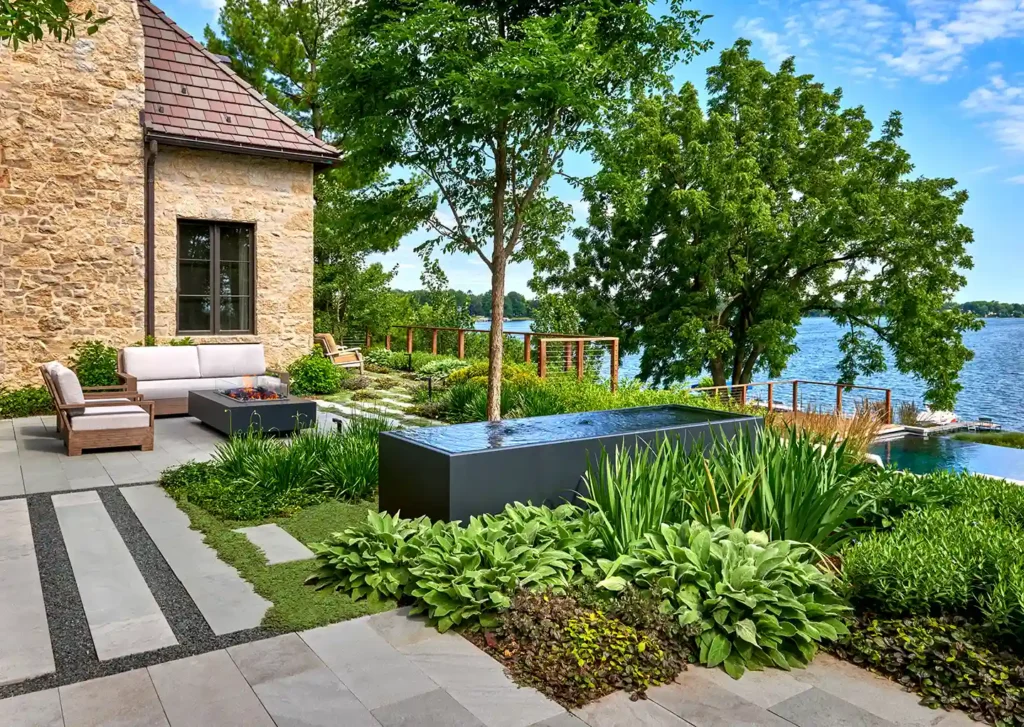
Each season presents unique challenges and opportunities for property care. Understanding how to adapt your maintenance practices is crucial for keeping your landscape looking its best year-round. This is especially important in areas like Barrington, Naperville, Chicago, Hinsdale, and Lake Geneva, Illinois, where seasonal weather fluctuations significantly impact lawn and garden health.
The Benefits of Seasonal Transitions
Embracing the seasonal transitions in your landscape care routine ensures your property remains healthy and attractive year-round. Addressing different maintenance tasks each season can also make life less overwhelming. This allows you to stay ahead of potential issues and set the stage for a stunning landscape all year round.
Spring and Fall Cleanups
Spring and fall are transitional seasons that require thorough cleanups. In spring, focus on removing debris, pruning trees and shrubs, and preparing your garden beds. Fall cleanups involve raking leaves, cutting back perennials, and winterizing your irrigation system. These seasonal cleanups are essential for preparing your landscape for the months to follow.
Spring Cleanup Essentials
Spring is the time to rejuvenate your landscape after the winter months. Begin by clearing debris such as fallen branches and leaves, which can smother your lawn and plants. Prune trees and shrubs to remove dead or damaged branches, and prepare your garden beds by adding compost or mulch to enrich the soil and suppress weeds.
Fall Preparation Strategies
Fall is all about preparing your landscape for the colder months. Raking leaves will prevent them from suffocating your grass and causing fungal diseases. Cutting back perennials encourages healthy growth in the spring while winterizing your irrigation system prevents damage from freezing temperatures.
Winter Property Care
Winter can be harsh on landscapes, but with proper care, your property can withstand the cold months and come back stronger when the weather warms. Snow removal is a critical service that ensures safety and accessibility. Additionally, protecting your plants with mulch and using landscape lighting maintenance can prevent damage and maintain curb appeal even in winter.
Effective Snow and Ice Management
Managing snow and ice is vital for maintaining accessibility and safety on your property. Regular snow removal from driveways and walkways prevents accidents and hardscape damage. We recommend using eco-friendly de-icing products to protect your property and the environment from harmful chemicals.
Protecting Plants in Winter
Prevent damage by protecting your plants in the winter from cold temperatures and harsh winds. Applying a layer of mulch around the base of plants insulates the roots and retains moisture. Burlap wraps can also shield delicate shrubs from windburn and frost.
Maintaining Curb Appeal in Cold Months
Even in the winter, your landscape can be a source of beauty and interest. Using landscape lighting to highlight architectural features or evergreen plants can be an enchanting way to bring your property to life over the colder months. Regularly cleaning and maintaining your lighting fixtures will ensure they function well and accentuate your landscape all year.
Summer Maintenance Tips
Summer is a time for growth and vibrancy in your garden. Regular watering, lawn mowing, and pest control for lawns are vital during the hot months. Consider installing an efficient irrigation system to ensure your plants receive adequate hydration while potentially reducing water usage.
Optimal Watering Techniques
Proper watering is critical during the summer months to keep your landscape healthy. The best practice is to water deeply but infrequently to encourage deep root growth, which improves drought resistance. Early morning is the best time to water, as it minimizes evaporation and the potential for fungal diseases.
Lawn Care in High Heat
Summer heat can stress your lawn, but proper care can mitigate heat damage. Set your mower blades higher to allow longer grass blades to shade the soil and reduce evaporation. Regular mowing with sharp blades and proper watering can keep your lawn looking lush, even in the hottest weather.
Managing Summer Pests
Illinois summers bring a variety of lawn and garden pests that can damage grass, flowers, and vegetable plants. Grubs, Japanese beetles, sod webworms, and chinch bugs are common culprits that thrive in warm, humid conditions.
Pest Control Strategies:
- Monitor your lawn and plants for early signs of damage, such as yellowing grass or holes in leaves.
- Use organic pest control methods like neem oil, insecticidal soap, or diatomaceous earth to target infestations while protecting pollinators.
- Encourage natural predators like ladybugs and birds, which help keep pest populations in check.
- Maintain a healthy lawn and garden by mowing at the proper height, watering deeply but infrequently, and removing thatch buildup to discourage pests.
By staying proactive and using eco-friendly solutions, you can keep Illinois summer pests under control while maintaining a thriving lawn and garden.
How to Maintain a Healthy Lawn Year-Round
A healthy lawn requires consistent care and attention, but it’s essential to follow best practices to avoid inadvertently damaging your grass. This is particularly important in areas like Barrington, Naperville, Hinsdale, Chicago, and Lake Geneva, Illinois, where seasonal weather variations can create challenges for lawn health. Here are our best lawn care tips for maintaining a lush, green property throughout the year:
Mowing Best Practices
- Mow Regularly: Keep your grass at an optimal height to promote healthy growth and prevent weeds.
- Mow at the Right Time: Mow when the grass is dry to prevent clumping
- Vary Mowing Patterns: Alternate your horizontal, diagonal, and vertical mowing pattern to avoid compacting the soil.
- Adjust Your Mower Height: Change the blades’ height according to the season, cutting higher in the summer (around 3 to 3.5 inches) to protect the grass from heat stress, and lower in spring and fall (around 2.5 to 3 inches). Sharpen mower blades at least twice a season or after every 20 to 25 hours of mowing to ensure a clean cut and reduce stress on the grass.
Strategic Watering
- Water Properly: Water deeply but infrequently to encourage deep root growth.
- Water at the Right Time: Develop a watering schedule that aligns with your local climate and soil conditions. Watering early in the morning reduces evaporation and fungal risk.
- Pay Attention: If your lawn shows signs of drought stress, such as wilting or discoloration, it may need more frequent watering.
Tailored Fertilization Plans
- Consider Your Needs: Fertilization is not a one-size-fits-all process. Tailor your fertilization plan to the specific needs of your grass type and soil.
- Fertilize Regularly: Apply fertilizer seasonally to provide essential nutrients your soil may lack.
- Use Slow-Release fertilizers: These provide a steady supply of nutrients, and application can be adjusted based on the season to support growth and stress recovery.
- Control Weeds: Use appropriate herbicides or manual removal to manage weeds before they get out of control.
Effective Weed Management
- Understand the Impact: Weeds aren’t just a nuisance, they can compete with your grass for nutrients and water, making effective management crucial.
- Be Proactive: Apply pre-emergent herbicides in early spring to prevent weed seeds from germinating.
- Be Responsive: Consider manual removal or spot-treating with post-emergent herbicides when you see weeds.
- Avoid Soil Compaction: Aerate your lawn at least once a year to improve soil health and promote healthy root development.
- Build Resilience: Regular aeration can significantly boost your lawn’s strength, protecting it from stress and improving overall health.
Disease Prevention
- Fungicide Application: Fungicides help protect your lawn from diseases like brown patch, dollar spot, and rust, especially during humid or rainy periods when these issues are most common.
- Grub Management: Grubs can severely damage lawns by feeding on grassroots, leading to thinning and patchy growth. Applying preventive grub treatments in late spring or early summer can keep infestations under control and maintain lawn health.
How to Enhance Curb Appeal with the Best Landscaping Practices
Curb appeal is important for both residential and commercial properties in Illinois, especially in communities like Barrington, Naperville, Hinsdale, Lake Geneva, and throughout the Chicago area. It creates a polished appearance and enhances the overall aesthetic appeal of your landscape. Here are some small landscaping things you can do to make a big impact.
Mulching and Edging
Mulching improves the appearance of your garden beds, helps retain moisture, and suppresses weeds. Edging creates clean lines and defines the boundaries between different landscape areas, adding a polished and sophisticated look to your property.
Selecting the Right Mulch
Choosing the appropriate type of mulch for your landscape is important for both function and aesthetics. Organic mulches such as wood chips, bark, pine needles, and leaf mulch enrich the soil as they decompose. Inorganic options, such as stones or rubber mulch, provide long-lasting coverage without the need for frequent replacement.
Leaf mulch is created by shredding fallen leaves and allowing them to partially decompose. It’s an excellent organic mulch that not only recycles natural waste but also significantly enriches soil.
Benefits of Mulching
Mulching offers a range of benefits beyond aesthetics. It helps retain soil moisture, reducing the need for frequent watering. Additionally, mulch is an insulator, protecting plant roots from temperature fluctuations. It also suppresses weed growth, reducing competition for nutrients.
Leaf mulch, in particular, provides additional benefits by improving soil structure, increasing organic matter content, and promoting beneficial microbial activity. It also provides essential nutrients, boosting overall plant health and growth.
Edging Techniques for a Polished Look
Proper edging techniques are essential for creating a clean, finished appearance in your landscape. Use a sharp spade or edging tool to create distinct borders between grass and garden beds. These should be regularly maintained to prevent grass from encroaching on your planting areas.
Hardscape Maintenance
Hardscapes, such as patios, walkways, and retaining walls, require regular maintenance to preserve their functionality and beauty. Cleaning, sealing, and repairing these structures will ensure they remain a beautiful part of your landscape design for years to come.
Routine Cleaning and Sealing
Regular cleaning of hardscape surfaces prevents the buildup of dirt, algae, and stains. Pressure washing can effectively remove grime and restore the original appearance of stone or concrete. Sealing these surfaces protects them from weather damage and prolongs their lifespan.
Repairing and Maintaining Structures
Addressing minor damages promptly can prevent them from becoming larger issues. Inspect hardscapes for cracks, loose stones, or shifting pavers, and make necessary repairs. Replacing damaged elements and re-leveling uneven surfaces can enhance the safety and appearance of your landscape.
Incorporating New Hardscape Elements
Introducing new hardscape elements can refresh your landscape and improve functionality. Consider adding features like a fire pit, seating area, or decorative pathways to make your property even more inviting and functional. Thoughtfully integrating these elements can make a big difference when it comes to enjoying your property, whether you are relaxing at home with family or entertaining a crowd.
Landscape Lighting Maintenance
Outdoor lighting enhances the beauty and safety of your property. Regularly check and maintain lighting fixtures to ensure they are functioning correctly. Replace bulbs, clean lenses, and adjust fixtures as needed to highlight key features of your landscape.
Regular landscape lighting maintenance ensures that your property remains well-lit and inviting. Clean lenses to remove dirt and debris that can diminish light output. Check for any signs of wear or damage to fixtures and wiring, addressing issues promptly to prevent further problems.
Enhancing Security with Lighting
Strategically placed lighting can enhance your property’s security. Use motion-sensor lights near entry points and pathways to deter intruders. Well-lit areas also reduce the risk of accidents, providing safe passage for you and your guests.
Highlighting Landscape Features
Lighting can be used creatively to highlight the architectural and natural features of your landscape. Use uplighting to accentuate trees or sculptures and path lighting to guide visitors through your property. Experiment with different lighting techniques to create a dynamic and inviting atmosphere all year round.
Creating a Property Management Checklist
A comprehensive property management plan is invaluable for efficiently organizing and executing your landscaping and maintenance tasks. This is particularly beneficial for property owners in Barrington, Naperville, Hinsdale, Lake Geneva, and the greater Chicago area, where seasonal shifts can significantly impact your landscape. A well-organized seasonal checklist can streamline your property care routine. When coming up with your unique plan, we suggest you include these elements:
- Seasonal Property Maintenance Checklist: A detailed list of tasks for each season to ensure nothing is overlooked. Break down tasks by month and prioritize based on weather conditions and plant needs. Include reminders for specific maintenance activities, such as pruning, planting, and equipment checks.
- House Maintenance Checklist: This routine maintenance schedule should encompass indoor and outdoor tasks to ensure comprehensive care. It should include maintenance activities like HVAC servicing, gutter cleaning, and window inspections.
- Resource List: Having a resource list of trusted professionals and suppliers can save time and stress when maintenance needs arise. Include contact details for landscapers, arborists, pest control services, and suppliers for plants, tools, and materials. Update this list regularly to reflect any changes or new partnerships.
- Budget Planner: An outline of anticipated costs for annual maintenance and improvement projects.
Effective Budget Management
Budgeting is a critical component of successful property management. Create a detailed budget plan that outlines expected expenses for routine maintenance, seasonal projects, and unexpected repairs. Adjust your budget as needed to accommodate changes in priorities or unforeseen costs.
Partnering with Professional Services
To achieve the best results, consider partnering with a reputable landscaping service. Professionals bring expertise, creativity, and a commitment to quality that can elevate your property to new heights. From planning and design to execution and maintenance, a professional team can handle all aspects of property care, allowing you to enjoy your outdoor space without the stress.
The Benefits of Professional Expertise
Professional landscapers have the knowledge and experience to handle complex projects and provide innovative solutions. They can assess your property’s unique needs and develop a tailored plan that aligns with your vision and budget. Their expertise ensures that your landscape is both functional and beautiful.
Comprehensive Service Offerings
Reputable landscaping companies offer a wide range of services, from design and installation to ongoing maintenance. This comprehensive approach ensures that all aspects of your landscape are covered, from lawn care and pest management to seasonal cleanups and irrigation system checks. Partnering with a full-service company simplifies maintenance and can provide peace of mind.
Stress-Free Maintenance and Upkeep
One of the greatest advantages of working with professional landscapers is the reduced stress associated with property care. With an understanding of your unique needs, goals and preferences, they manage the logistics, scheduling, and execution of all maintenance tasks, freeing you to enjoy your outdoor space. A reputable landscaping company will provide regular communication and updates to keep you informed, ensuring that your landscape remains in top condition year-round.
The Value of Landscaping Services in Illinois
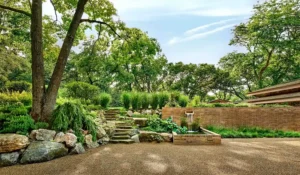
Whether you choose to do it yourself or trust a professional, landscaping is an art form that combines creativity with science. Professional landscaping services in Illinois can support your efforts and can transform any outdoor area into an impeccable and breathtaking oasis. Whether it’s designing a new garden, installing a water feature, or creating a functional hardscape, expert landscapers can tailor their services to meet your specific needs and preferences.
Designing Your Dream Landscape
A professional landscaper can work with you to understand your vision, preferences, and lifestyle needs to design your dream outdoor space. This is where creativity meets practicality. It includes selecting plants that will thrive in your climate, choosing the optimal materials for hardscapes, and incorporating elements such as lighting and water features. A well-thought-out design is the foundation for a successful landscape transformation that can be maintained with joy.
The Role of Illinois Native Plants
Understanding and incorporating native plants into your landscape design offers numerous benefits, from enhanced biodiversity to reduced maintenance requirements. Professional landscapers have specialized education and understand how specific native plants are adapted to local conditions and which are the most resistant to local pests and diseases. Landscapers may also suggest native plants as they tend to require less water and fertilizer, making them a lower maintenance and sustainable choice that contributes to the overall health of your ecosystem.
Implementing Sustainable Practices
Sustainability is an increasingly important aspect of landscaping. Implementing sustainable practices such as rainwater harvesting, using permeable materials for hardscapes, and choosing drought-resistant plants can significantly reduce your landscape’s environmental impact. Professional landscapers have the education to make recommendations that benefit the environment and can lower your home maintenance costs over time.
Total Landscape Maintenance
Total landscape maintenance involves keeping every aspect of your outdoor space in top condition. This comprehensive care includes regular lawn and garden maintenance, tree and shrub care, pest control for lawns, and seasonal cleanup. It can be a lot to keep up with, but by investing in professional maintenance, you can rest assured that your landscape will remain beautiful and healthy throughout the year—without having to spend all of your downtime taking care of it.
Bring Your Landscape to Life with Professional Property Care
Optimizing and caring for your outdoor spaces is an ongoing journey that requires dedication and expertise. Understanding the fundamentals of landscape design and maintenance is key to achieving beautiful, functional landscapes, especially for homeowners in Barrington, Naperville, Hinsdale, Lake Geneva, and throughout the greater Chicago area. By implementing the strategies outlined in this guide and collaborating with professional services, you can transform and maintain your landscape as a living work of art that enhances your property’s value and appeal, reflecting your personal taste and style. Most importantly, a beautiful and well-maintained landscape provides the backdrop for enjoying time spent relaxing, entertaining, and spending time with friends and family.
Contact our team to discover the transformative power an exceptional property care partner can provide.


